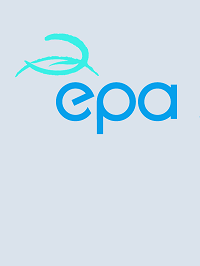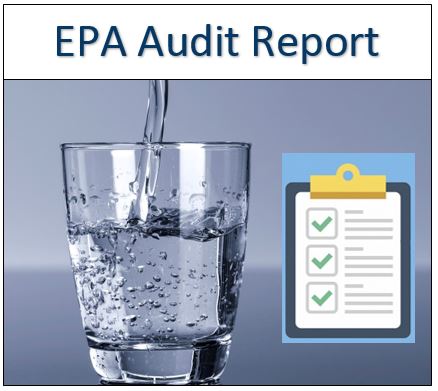Latest Publications

Water Abstractions and Associated Impoundments – Technical Guidance on Retrospective EIA (rEIA) Considerations for Abstractions
Year: 2025
This guidance document aims to outline the categories of abstractions that are likely to require a retrospective EIA or a retrospective screening determination under Part 5 of the Water Environment (Abstractions and Associated Impoundments) Act 2022.

Movement of Fgas & ODS refrigerants into & out of Ireland
Year: 2025
Movement of Fgas & ODS refrigerants into & out of Ireland


Senior Manager (Level 2) – Ecological Monitoring and Assessment
Post Number: 000513, February 2025
Year: 2025
The EPA is recruiting a Senior Manager (Level 2) to lead and manage the Ecological Monitoring and Assessment Unit in the Water Management Programme. This is an exciting career opportunity to lead on the assessment and reporting of water quality in Ireland and to influence policy and action to deliver water quality improvements.

Bainisteoir Sinsearach (Leibhéal 2) Monatóireacht agus Measúnú Éiceolaíochta
Uimhir Phoist: 000513, February 2025
Year: 2025
Tá Bainisteoir Sinsearach (Leibhéal 2) á earcú ag an EPA chun an tAonad Monatóireachta agus Measúnaithe Éiceolaíochta sa Chlár Bainistíochta Uisce a threorú agus a bhainistiú. Is deis ghairme spreagúil í seo le bheith i gceannas ar mheasúnú agus ar thuairisciú cháilíocht an uisce in Éirinn agus tionchar a imirt ar bheartas agus ar ghníomhartha chun feabhsuithe ar cháilíocht uisce a sheachadadh.

Research 478: Critical Raw Materials for Ireland for a Resource-Efficient Circular Economy (CIRCLE)
Authors: Ahmar Murtaza, Maham Mahnoor, Anum Inam, Ali Akbar Shah, Muhannad Ahmed Obeidi and Inam Ul Ahad, February 2025
Year: 2025
Global raw material supply is becoming increasingly complex and uncertain, exacerbated by resource scarcity and supply chain vulnerabilities. Critical raw materials (CRM) are vital for industrial growth and competitiveness and a resilient circular economy. Ireland lacked a raw material criticality assessment methodology tailored to its unique economic and resource landscape. To address this gap, the CIRCLE research project developed a CRM methodology tailored to Ireland’s economic and resource landscape. Three methods were developed for assessing raw material criticality with a total of 42 raw materials assessed. The research finding assist stakeholders, including industry and policymakers, in identifying essential materials for various industrial sectors, providing insights into potential supply risks and economic impacts. The report recommends the establishment of a national database to include CRM, Circular material use rate (CMUR) and material flow analysis data.

Water Abstractions and Associated Impoundments - Registration and Licence Application Guidance Document
Year: 2025
This guidance document aims to assist any person carrying out or intending to carry out a water abstraction to register or apply for a licence or a review of conditions attached to a licence.

Protected Disclosures Annual Report 2024
Section 22 of the Protected Disclosures Act 2014 (as amended) requires the publication of an Annual Report each year relating to the number of protected disclosures made in the preceding year and any actions taken in response to such disclosures., February 2025
Year: 2025

2025 EPA Newsletter for Stationary Installations in the EU ETS
Year: 2025
2025 EPA Newsletter for Stationary Installations in the EU ETS

RED II Biomass Requirements for EU ETS Participants Feb 2025
Year: 2025
Renewable Energy Services Directive Biomass Requirements for EU ETS Participants 02 2025

Hollyford Audit 04/12/2024
Year: 2025
Report of an audit carried out at Hollyford public drinking water supply Co. Tipperary on 04/12/2024

EPA List of Approved Laboratories - 2024
List of the laboratories that performed satisfactorily in the 2024 EPA Intercalibration Programme, February 2025
Year: 2025
List of the laboratories that performed satisfactorily in the 2024 EPA Intercalibration Programme

EPA Strategic Plan 2022 - 2026 (2025 Revision)
Year: 2025
This strategy, the EPA’s sixth, sets out what we intend to achieve over the next five years in delivering our mandate and our purpose to protect, improve and restore our environment through regulation, scientific knowledge and working with others. In January 2025 we completed a mid-term review of the Strategic Plan and updated it to reflect changes to the EPA’s role and the key environmental priorities identified in the State of the Environment Report 2024.

Research 477: DESIGN – Detection of Environmental Sources of Infectious Disease in Groundwater Networks
Authors: Carlos Chique, Paul Hynds, Liam Burke, Dearbhaile Morris, Michael Ryan and Jean O’Dwyer, February 2025
Year: 2025
In Ireland groundwater sources provide domestic drinking water to approximately 750,000 people in mainly rural areas. Studies that differentiate the exposure pathways and sources are of paramount importance for establishing environmental management solutions that safeguard public health. Ireland currently has the highest incidence of verotoxigenic Escherichia coli (VTEC) infection in the EU, domestic private wells are identified as a likely source of infection. This is a public health concern for public authorities and consumers alike. The DESIGN research project provides the first quantitative assessment of VTEC and Cryptosporidium in domestic groundwater supplies in Ireland. It provides insight into the prevalence, source and transport of VTEC and Cryptosporidium in groundwater supplies. The research developed bespoke, spatio-temporal groundwater management policies, and offers invaluable guidance for future planning, remediation and mitigation of contamination in private wells.

Senior Manager (Level 2) – Catchment Science Unit
Post Number: 000510, February 2025
Year: 2025
The successful candidate(s) will fulfil the role of Senior Manager (Level 2) – Catchment Science. The Senior Manager (Level 2) will lead and manage the staff and resources of the Catchment Science and Management Unit, in the Water Management Programme. This is an exciting career opportunity to influence policy and action to deliver water quality improvements by leading the development of the evidence base on the pressures impacting on water.

Scientific Officer I (Level 3) Catchment Science
Post Number: 000512, February 2025
Year: 2025
The successful candidate will fulfil the role of Scientific Officer I (Level 3) Catchment Science and will lead a team within the Catchment Science and Management Unit of the Office of Evidence and Assessment. The Unit’s role is to assess the risks and pressures impacting on the water environment; and to track progress with the implementation of the actions and measures to assess what they are delivering in terms of water quality outcomes. All the work is carried out within an integrated catchment management framework, so that a holistic approach is taken to understanding pressures and impacts. The team invests significantly in the development of analytical tools and models in assist in the assessments.

Scientific Officer II (Level 4) Environmental Data Science and Modelling
Post Number: 000503, February 2025
Year: 2025
The Office of Evidence and Assessment (OEA) is the primary source of integrated assessment and evidence-based scientific advice on Ireland’s environment. The OEA strives to be a trustworthy champion for the environment by providing timely, accurate and tailored environmental data, information and assessment to the public and other stakeholders to help them make informed decisions.